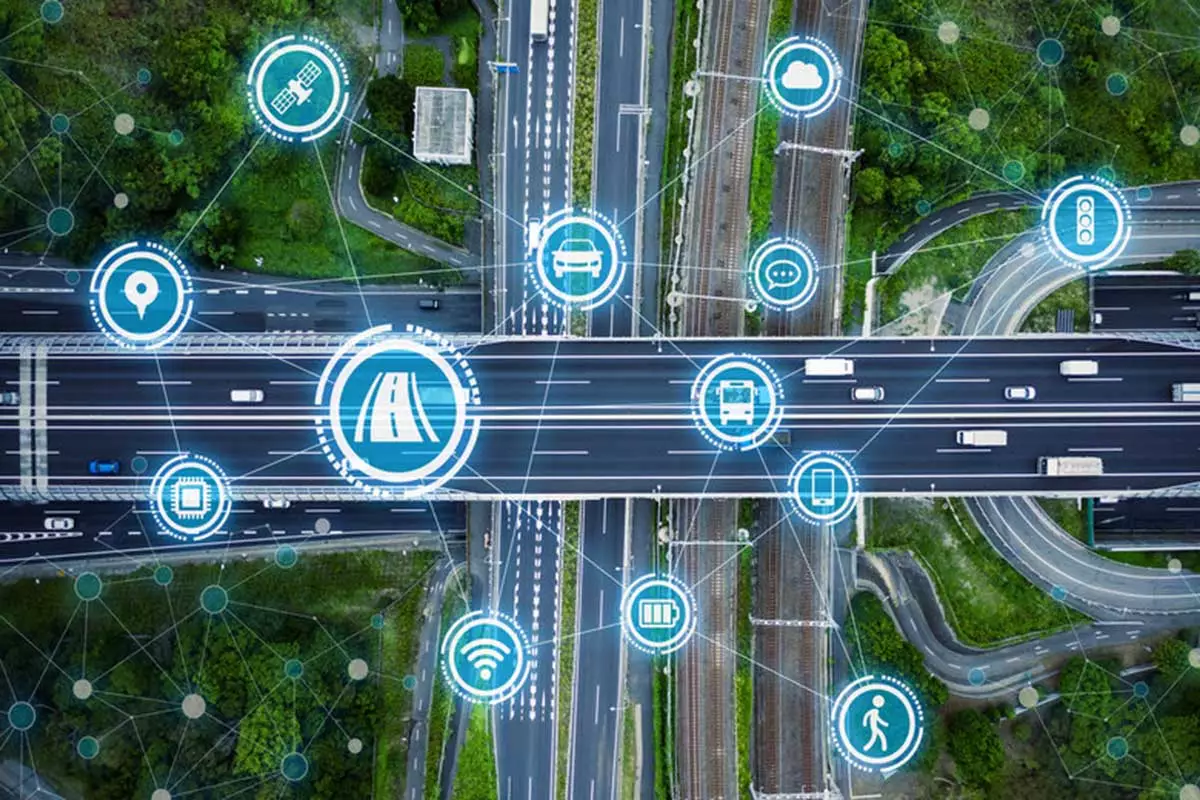
Smart roads: a step closer to sustainable mobility
With the rapid advance of technology, it is becoming more and more common to hear the adjective “smart” in the names of new devices. Smart phones, speakers, watches, cars and household appliances are already part of our daily lives, and with the help of the Internet, we work more efficiently and quickly. But… can we talk about smart roads ?
The cities of the 21st century concentrate more than 50% of the world's population, with this percentage reaching 75% in Europe and 82% in the USA. The greatest production of wealth occurs in cities, which leads to greater mobility . The deployment of so-called smart roads derives from the need to manage the development of cities in a sustainable way . In addition to advances in environmentally friendly cars, there is a need to create comprehensive communication routes that prevent and reduce traffic jams and accidents, that provide safer journeys and improved itineraries such as tolls, efficient routes or aids to reduce consumption.
Below we will discuss the advances that are being implemented in this regard at an accelerated pace. Everything indicates that we will soon be part of sustainable mobility, where car rental has a lot to offer.
What are smart roads?
Smart roads, also known as smart-roads , are communication routes that incorporate advanced technology and interact with cars and drivers . Monitored by cameras, sensors and other technological tools , they will create an information network that will connect drivers and pedestrians and provide real-time solutions. Their objectives include increasing driving efficiency, improving safety and, due to their sustainable nature, preserving the environment .
The range of possibilities for optimising technological management of roads is very wide. Among the planned applications are, for example, battery charging lanes and intelligent lighting.
It is very beneficial to plan for the progressive incorporation of improvements such as photosensitive paints for signage. The limits of progress in sustainable mobility do not seem to exist, given the technological advances proposed.
Technologies incorporated in smart roads
Below we list some of the innovations that are expected to be implemented to make smart roads a reality:
- Photovoltaic pavements with charging systems: with the help of solar panels , when cars drive on the road, they charge the panels. They have already been implemented in some cycle paths in the Netherlands and the main problem to be overcome is the great weight of some vehicles , which could break the pavement.
- Interconnection of road elements : cars, pedestrians, traffic signals and all road elements will be connected via the Internet to receive real-time information on traffic jams, accidents or special road conditions, in order to improve traffic safety and fluidity.
- Smart zebra crossings : these consist of LED pavements with pedestrian detectors and projectors . Conceived and designed to appear or disappear when they detect pedestrian movement, they will facilitate the passage of vehicles and considerably relieve traffic congestion within cities.
- Using Big Data: managing traffic using artificial intelligence is an obvious action that will be implemented sooner or later, and which will provide valuable forecasts of traffic flows and provide useful information for drivers and pedestrians.
- Photosensitive paints : Smart road design also takes into account the energy element . The use of photosensitive paints in road markings illuminates the lane to recharge the battery of electric cars at night. During the day, they are recharged by sunlight thanks to the solar panels mentioned above. Another application of these dynamic paints is their properties to react to the weather and provide information. In this way, the driver can obtain valuable data through these symbols on the road surface.
- Charging lanes : so far, advances in road infrastructure have focused on the installation of electric charging stations. However, the future points to the development of charging lanes that use wind power or solar energy to recharge vehicles traveling on smart roads. Research seeks to harness these resources to increase autonomy . Engineering foresees the installation of roads with electric components or solar panels . There are also plans to develop turbines that take advantage of the air flow produced by vehicle movement. The focus of this concept of smart roads is on having channels to recharge batteries while driving . Several automobile manufacturers are developing wireless charging systems on the road.
The role of Big Data in sustainable mobility
The complexity established by the accelerated growth of cities and their consequences in terms of mobility requires efficient responses. In this order of ideas, ICTs provide useful tools for such management.
The transportation of goods and passengers, energy consumption and emissions into the environment are variables to be taken into account. Therefore, the management of large amounts of information is essential. We are then talking about Big Data.
The creation of an intelligent infrastructure allows these variables to be managed efficiently. Integration of roads, vehicles, implements, equipment, as well as hardware and software make up the equation.
Systems and protocols are needed to collect the necessary information in real time. In addition, the interaction between the infrastructure and the users must be fast and reliable.
Advantages of developing sustainable mobility
The benefits obtained from developing smart roads can be determined in various ways. Not only from personal improvements, but also from environmental, economic and social ones.
- The average driver can benefit from smart road management in terms of mobility and safety. Reducing traffic jams and preventing and decreasing accidents are a gain in terms of quality of life.
- However, in collective terms, smart mobility also offers benefits. Think of lower energy consumption or the reduction of emissions of harmful gases such as carbon monoxide (CO) or nitrogen oxide (NOX).
- The increase in vehicles and the complications of increased traffic can be managed with technological support . Sensors on the roads, traffic drones, and apps to manage the mobility of cargo or passengers are very useful.
- Technology that can harness the flow of cars to produce energy or recharge them is an innovative possibility. In this way, technology maximises the use of available resources.
- Drivers can count on signs that provide valuable information about the conditions of the environment. The installation of lights that are sensitive to the presence of users is also beneficial.
Some experiences towards the roads of the future
The use of drones is probably the first reference that comes to mind when talking about smart roads. However, Big Data and Artificial Intelligence have wide applicability in these road developments.
One of the application scenarios is the forecasting of traffic flows using models . Passenger and freight transport fleets can also be managed in real time, optimising schedules.
Machine vision is an important administrative support for a variety of activities, including monitoring vehicle occupants at high speed, dynamic pricing and roadside assistance.
In the field of tolls, initiatives are being developed that contemplate the use of electronic toll collection or barrier-free toll collection. With technological support, travel time can be saved and gas emissions can be reduced by eliminating waiting times.
By 2038, the European Union plans to use Big Data to prevent up to 25,000 deaths and more than 140,000 serious injuries a year.
Leave a comment:


Tranding News










